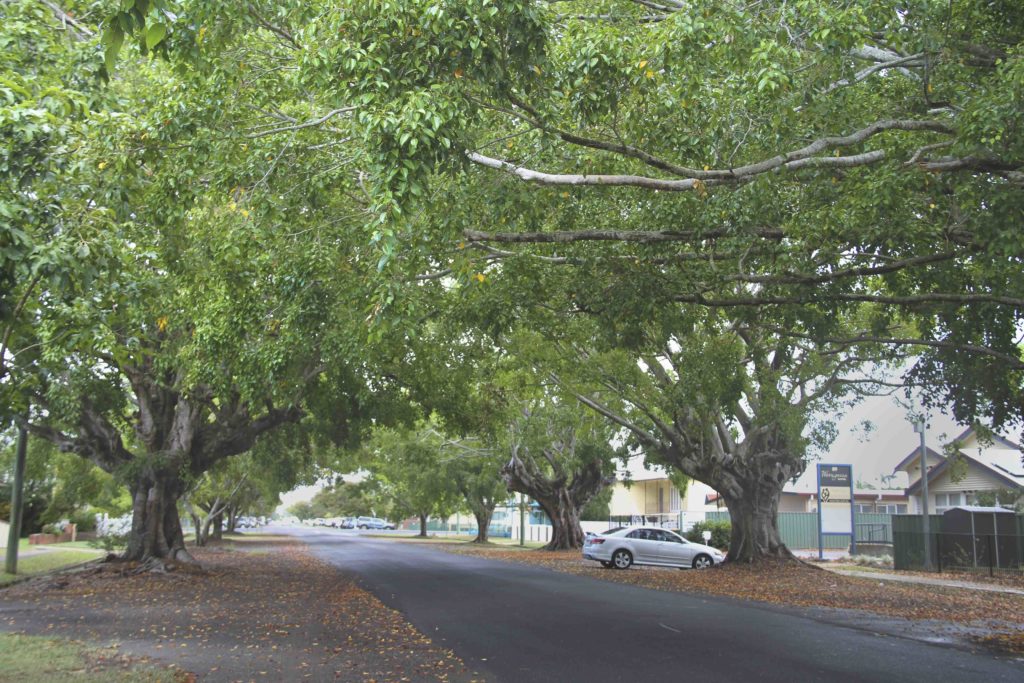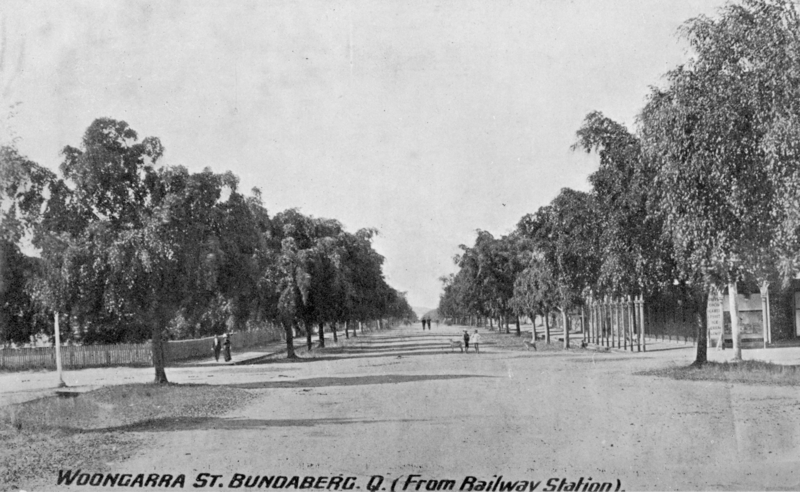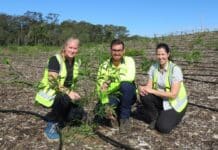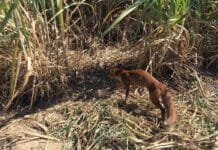
Looking up at the sprawling canopy of one of the Bundaberg CBD’s iconic fig trees, it’s easy to imagine the long life they’ve lived.
In many cases, that life has spanned more than a century.
Bourbong Street’s weeping fig trees, found between Buss Park and the Post Office, are thought to have been planted by the Buss family in 1890. They have been placed on the Queensland Heritage Register.
Bundaberg Regional Council has recognised the significance of the picturesque avenue of fig trees along sections of Woongarra Street by adding them to its local heritage register.
Trees of similar size and age can be found along Maryborough Street and within Alexandra Park.
Special care and attention goes in to maintaining these magnificent trees.
Trees can outgrow urban environment
The health of the fig trees is continuously monitored by qualified staff and independent arborists with inspections carried out on at least an annual basis.
With community safety in mind, Council works towards retaining all fig trees, provided they have a low risk of failure as assessed by a qualified arborist.
Consulting arborist Matthew Duncan said when it came to ageing fig trees in city streetscapes, problems could well and truly start to arise after 100 years.
“When trees get old their vigour and health starts to deteriorate, especially when they’re in an urban environment,” Mr Duncan said.
“They are probably coming to the end of their life expectancy and amenity and starting to become less attractive.
“When they get to that age there is only limited work we as arborists can do to maintain health and amenity without major changes to surrounding infrastructure.”
He said weeping figs had an extensive root system which needed a lot of open ground.
“They are a hungry tree in terms of water and nutrition,” he said.
“When they are surrounded by hard infrastructure it is difficult for them to source that nutrition and water they need.
“That’s why a lot of them are in decline, they are outgrowing their planted location.”
He said when it came to the annual inspections Council commissioned, consulting arborists would be looking at general vigour and health of the tree.
“That includes the density of the foliage, the colour of the foliage, structural integrity and branch structure – making sure there’s no faults or decay points or evidence of any fungus attached to the timber.”
The story behind iconic avenue of fig trees

Anyone who has travelled along Woongarra Street would be able to conjure a picture of the towering stand of fig trees that line sections of the street.
It’s a sight to behold and one not easily forgotten.
But did you know that effect was more than a century in the making?
Two distinct areas of weeping figs (Ficus benjamina) remain in Woongarra Street.
According to Council’s local heritage register, these weeping figs are thought to have been planted at the turn of the century.
They may have been donated by the manager of the Royal Bank in Bundaberg, William Fullerton, as part of a tree-planting program originally financed by local businessman Frederic W Buss in 1888.
All of the Woongarra Street trees have been planted on either side of the roadway, between the bitumen and the kerb and channel.
These trees provide a shady avenue with the crowns meeting in the centre of the road.
One group of four trees can be found between Tantitha and Walla Streets and two groups of plantings, which include figs and other species, can be found between Branyan and Bingera Streets and Bingera and Burrum Streets.
Tree planting program
More than 6000 trees are being planted throughout the Bundaberg Region to protect the environment and provide shade in parks and natural areas.
Tens of thousands of trees have been planted in the past three years.
- Other news: Bargara Post Office on the move







